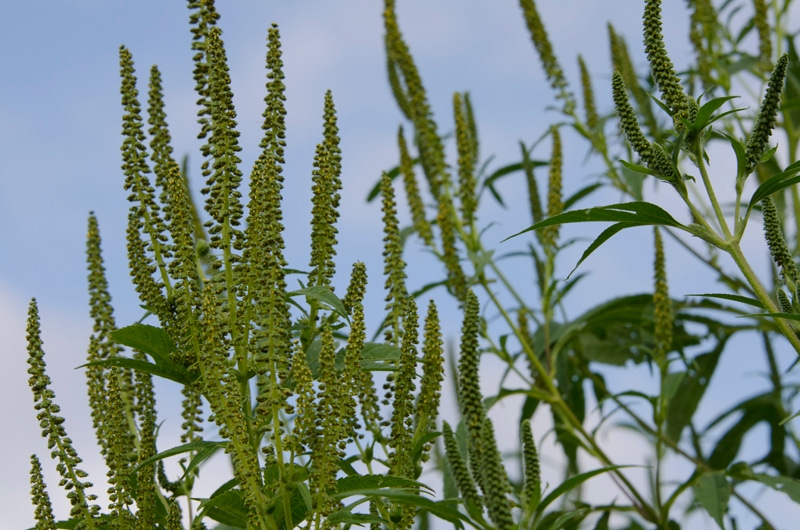May 21, 2014

Shoulda, coulda, woulda may be the theme if you didn’t use a pre-emerge herbicide, and rain has kept you from returning to spray. That could get to be expensive.
In soybeans, you have from 9 to 19 days after soybean emergence before losing yield. Expect about a 2% yield loss for every leaf-stage delay past the critical stage of weed control, according to research by Stevan Knezevic, University of Nebraska 
professor of integrated weed management.
After 9-19 days (depending upon row width), you lose about $3.50 per day in lost yields, Knezevic says.
That loss number can be much higher, depending upon weed species, says Iowa State University Weed Scientist Mike Owen. “This yield hit from weeds more than pays for the cost of using soil-applied residual herbicide,” Owen adds. “The yield hit could be higher if you have a weed like Palmer amaranth that can grow 3-4 inches a day. Farmers tell me ‘it’s been wet, I’ll come back after things dry out and spray,’ but Mother Nature is fickle.
“This Nebraska research is very pertinent because weed development has not changed, but what has changed is weed resistance.
“Adopt a field-specific weed control plan the same way you tailor hybrids and varieties to different fields,” Owen adds. “Closely scrutinize each field differently according to its weed species and soils. A number of fields should be treated the same way, but a number need extra care and diverse weed-control tactics. Truthfully, all fields need more weed-management diversity; and that will probably be in the form of different herbicides.
“You would never risk planting all of your acres to the same hybrid, so why treat them all the same to control weeds? Rotate your chemistries based on group number and mode of action.
“Contrary to the old saying, if your weed-control program is not broken, DO change it anyhow because it will be broken,” Owen says. “Invest more time and thought in managing weeds. Farmers have to recognize it will take more time, and anything simple and convenient is ordained to fail.
“We have 60-70% fields with multiple resistances in Iowa, so there are fewer available effective herbicides. Approximately half of our crop fields have waterhemp that no longer responds to glyphosate, so you then rely on different postemerge products,” Owen says.
See the table for Knezevic’s recommendations across other row widths – they hold true up to the R3/beginning pod soybean stage. Yield losses accelerate after R3.

In 30-inch rows, you have just 9 days to control soybean weeds before costing yourself $3.50 per day in lost future yields from weeds. Narrower rows give you up to 19 days before the financial hit. Once the crop canopy closes, new weed germinations and competition diminish, says Stevan Knezevic, University of Nebraska 
professor of integrated weed management. This research reflects three years of data at two eastern Nebraska locations. Credit Stevan Knezevic, University of Nebraska
By weed height
In terms of weed size, “if the weeds emerge 4-5 days before the crop or they are taller than the crop, they will shade the crop, so begin the control 4-5 days (1-2 leaves) before the critical weed control period,” Knezevic says. “If the weeds emerge 5-10 days after the crop, they will not shade the crop that early in the season, so you can begin the control 5-10 days (2-3 leaves) after the beginning of critical period.”
Knezevic’s multidisciplinary approach to weed control is to “use many little hammers to chip away at our diverse weed species’ highly variable life cycles,” he says. Soybean row spacing tells you how quickly you need to get cracking to beat weeds. “Timing is everything,” he says. “And because weeds rob yield so early in the growing season, use a pre-emergence herbicide to delay weeds’ starting point, giving crops full access to moisture, sunlight and nutrients. This accelerates canopy closure before the countdown to your pre-emergence herbicide wearing out. When the soybean canopy closes, it blocks sunlight from reaching the soil, impeding weed growth.”
For adequate weed control through the entire critical period, apply glyphosate tank-mixed with a residual herbicide at the beginning of the critical period, which provides adequate weed control the entire critical period, Knezevic says.
“Farmers have succumbed to the siren song of simplicity,” Owen says, referring to the Greek mythology sailor/traveler Ulysses, who could not resist what sounded like the songs of beautiful women. But the “songs” proved to be a trick, just like the simplicity of “simple weed control,” Owen says. “In keeping with that analogy, growers are on the rocks. Belief in that simplicity allowed farmers to forget their earlier weed-control knowledge. Now they have to deal with the problems they’ve caused.”
 You might also like:
You might also like:
About the Author(s)
You May Also Like




